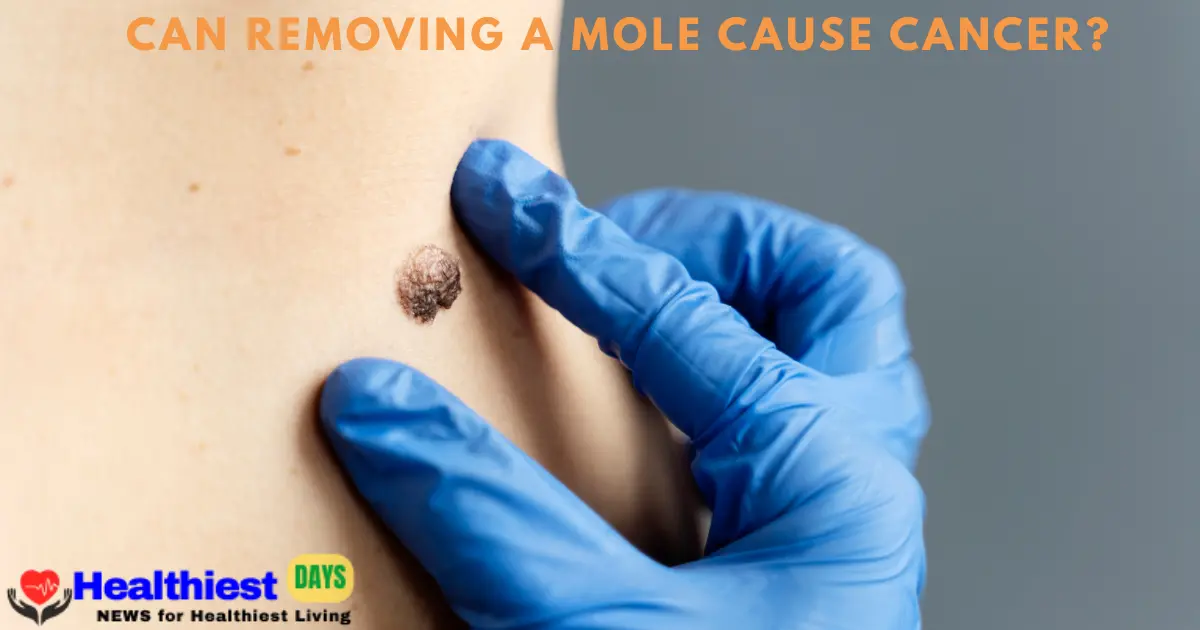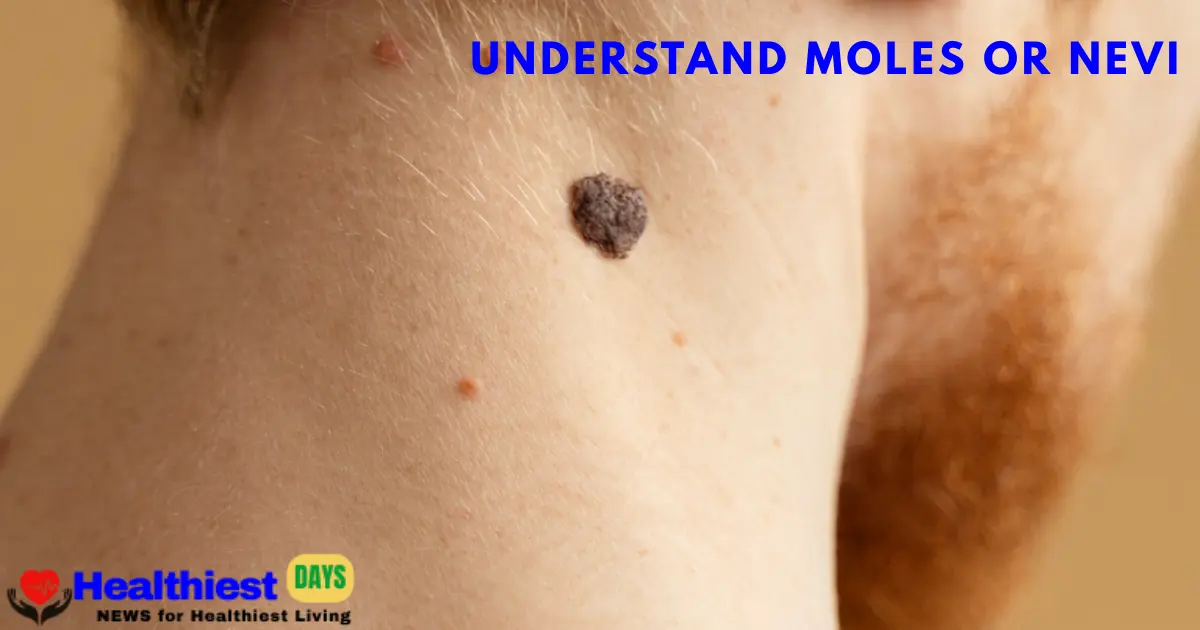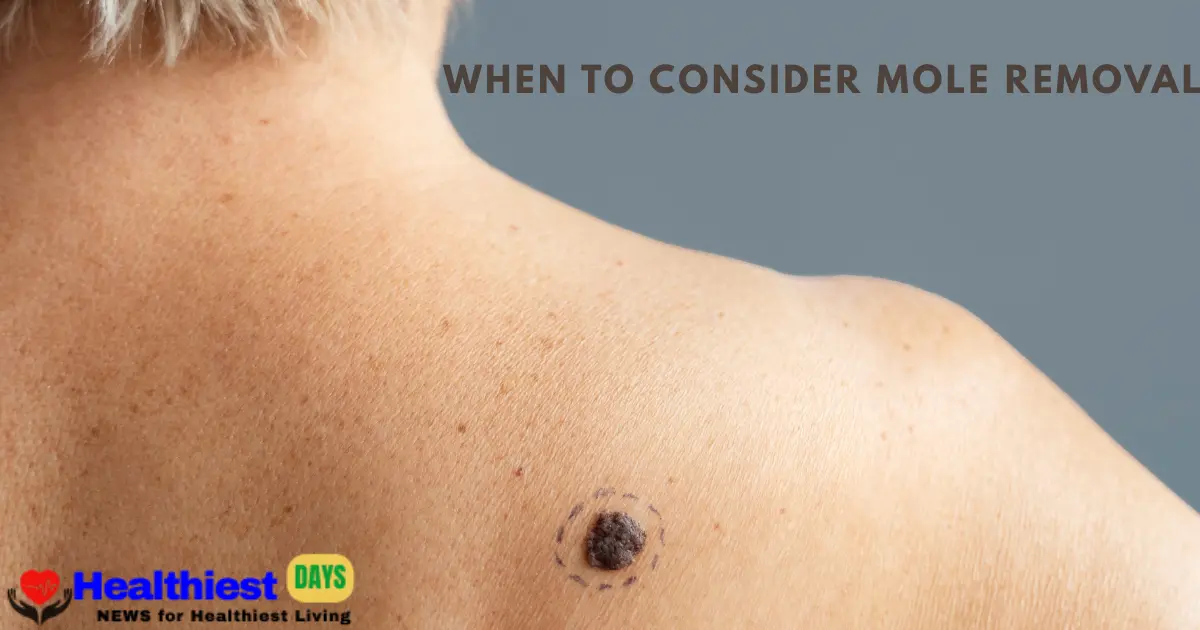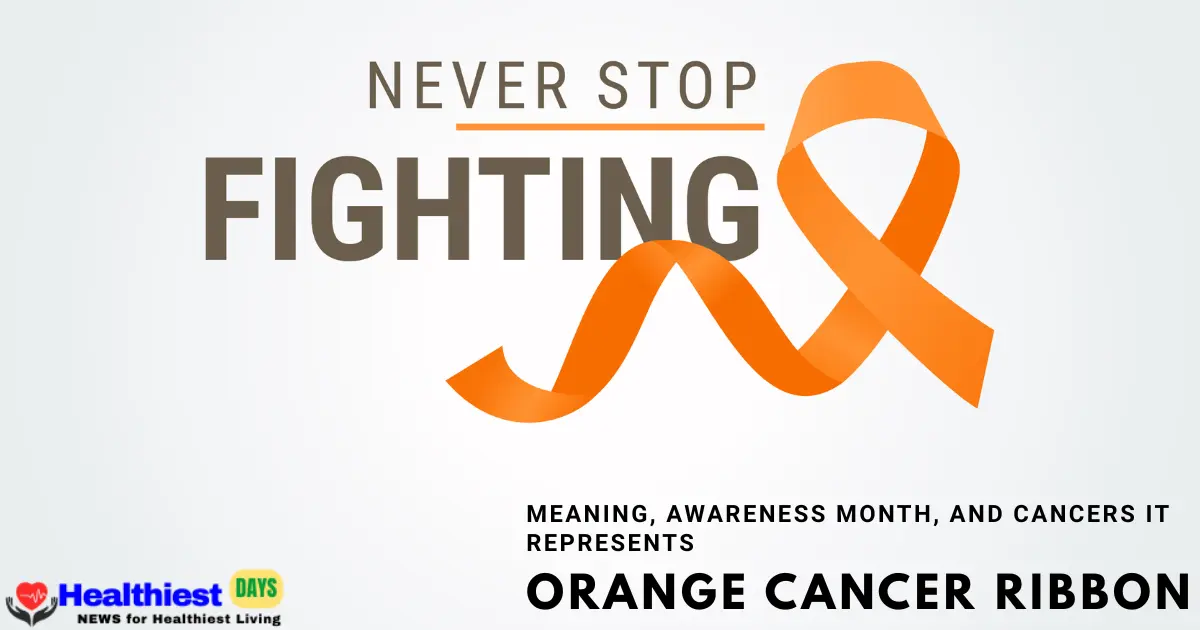Can Removing a Mole Cause Cancer? Myths, Facts, and Expert Advice 2025

Talking about moles, these are common skin growths—often harmless, some potentially risky. But many people are worried about the question: can removing a mole cause cancer?
The short answer to this: No, removing a mole doesn’t cause cancer at all—but it may reveal one.
In this valuable guide, we’ll differentiate myths from science, explain when a mole removal is necessary, explore safe removal methods, and help you to protect your skin health.
Why the question “Can removing a mole cause cancer?” Matters
It is well researched that skin cancer is the most diagnosed cancer in the U.S., with over 5 million cases each year (American Cancer Society). Moles, or in other words nevi, can sometimes be the first sign of melanoma, the most concerning skin cancer type.
Well, it’s natural to worry whether removing a mole can trigger cancer cell growth. This psychological concern often comes from old misconceptions and confusion between cause and diagnosis.
Understand Moles or Nevi
A mole, or nevus, is an uneven cluster of pigment-producing cells called melanocytes.
- Benign moles: These are uniform in color, round in shape, and stable over time.
- Atypical moles (dysplastic nevi): In this kind of mole removal, there are some irregular structures in shape, of multiple colors, larger than 6 mm, and they may have a higher melanoma risk.
Important things to know: For proper removal of a mole, it does not trigger cancer, but if a mole was already cancerous and it was in a condition to be removed, then removing it without a proper biopsy could delay diagnosis.

The Myth: Mole Removal Causes Cancer in the Body
This myth usually comes from the following reasons:
- Hidden melanoma: It is a myth in which a mole already having cancer cells may be discovered after a removal procedure from the skin. It is supposed that cancer existed due to the removal of a mole, which is wrong or a misperception.
- Partial removal risks: It is another myth that shaving off part of a melanoma without complete excision/surgical removal or resection can leave malignant cells behind.
- Misinterpretation of timing: Cancer symptoms that appear after removal are usually due to pre-existing disease in the mole or nevus.
Fact: It is worth noting that there’s no biological mechanism by which proper mole removal through a professional practitioner can create cancer cells.
When to Consider Mole Removal
You should definitely see a dermatologist if a mole or nevus:
- Changes in size, shape, or color.
- Develops irregular borders.
- Bleeds, crusts, or itches.
- Appears suddenly in adulthood.
ABCDE rule that the dermatologists follow:
- Asymmetry
- Border irregularity
- Color variation
- Diameter >6 mm
- Evolving changes
Safe Mole Removal Methods
Mole excision should always be done by a qualified medical professional/dermatologist. Common methods include:
| Removal Method | Best For | Notes |
| Surgical excision | Suspected cancerous moles | Complete removal + biopsy |
| Surgical shave | Raised, benign moles | Less scarring, no stitches |
| Laser removal | No biopsy—not for suspicious moles | No biopsy — not for suspicious moles |
| Cryotherapy | Non-cancerous skin lesions | Freezes cells, limited use for moles |
You should never try DIY mole removal kits—because these can cause infection, scarring, or delayed detection of cancer.
Can Removing a Mole Reveal Cancer?
The answer is yes. If a mole seems suspicious, then a biopsy after removal can reveal cancerous cells.
This is not cancer caused by the removal of a mole—it’s cancer that was already present there.
Risks of Improper Mole Removal
The following are few risks involved in mole removal
- Incomplete removal → malignant cells remain.
- No biopsy → missed diagnosis.
- Scarring & infection from unsterile techniques or quacks.
Tip of the talk: You should always request pathology testing for any mole removed.
Who’s at Higher Risk for Skin Cancer?
Here are signs that depict who may be at higher risk for skin cancer
- Fair skin, light hair, light eyes
- History of sunburns
- Many moles (>50)
- Family history of melanoma
- Weak immune system
If you lie in a high-risk group, then annual skin checks are very essential.

Prevention & Skin Health Tips
Below are few precautionary measures for skin health
- Use SPF 30+ daily (even on cloudy days).
- Avoid tanning beds.
- Wear protective clothing & hats.
- Perform monthly skin self-exams.
- See a dermatologist for any changes.
Expert Opinions
One opinion is “Mole removal itself is safe. The danger lies in failing to test suspicious moles.” by Dr. Emily Green, Board-Certified Dermatologist, Cleveland Clinic
Another opinion is, “Early detection of melanoma can save lives, so any changing mole deserves attention.” by Dr. Robert Hayes, American Academy of Dermatology
Case Study
Let us see a case study:
Patient: 42-year-old woman, fair skin, having a family history of melanoma.
Situation: Removed a mole on her shoulder after noticing a color change.
Outcome: Biopsy confirmed early-stage melanoma. Early treatment resulted in complete recovery.
Lesson: Removal didn’t cause cancer; actually, it revealed it.
Common Myths Debunked
| Myth | Fact |
| Removing a mole can cause cancer | False, there are only suspicious or bothersome moles that require removal. |
| All moles need removal because they are harmful | False, it becomes very risky & can hide cancer, or even it can cause other issues as well. |
| False, there are only suspicious or bothersome moles which require removal. | Home mole removal is safe and sound, as it does not carry any pernicious effect |
| Laser is best for all mole-removal from your skin | False, it is not for suspicious ones because all mole removal methods are not the same. |
Summary of Findings
- Mole removal does not cause cancer, as it comes with safety measures to ensure healthcare.
- It can help diagnose existing skin cancer in your body with possible minimal side effects.
- Always have suspicious moles evaluated by a dermatologist and understood to be removed from the body.
- Safe removal methods and pathology testing become very essential for mole removal.
Implications & Future Awareness
As skin cancer rates rise and spread in the body at different rates, public education on mole monitoring is also very crucial. Future dermatology research has the capacity to focus on AI-based mole tracking apps and non-invasive diagnostic tools.
Limitations
- This article is not a substitute for medical advice for any condition.
- Always consult a licensed dermatologist for personal concerns because your skin needs the best solution for every mole removal procedure.
- Learn more at healthiestdays.com
Relevant FAQs:
- Can removing a mole cause skin cancer in your body?
Removing a mole from your body does not cause cancer in all conditions. - Is mole removal safe?
Yes, when done by a dermatologist, it mostly becomes a safe and sound medical procedure. - Can laser removal detect cancer?
No, laser detection does not empower you to identify the presence of cancer in your body; it only destroys the unwanted mole from the body. - Will my mole grow back?
Sometimes, it can surely happen if cells remain after partial removal. - Can I remove a mole at home?
Strongly discouraged because it can bring some unwanted critical issues for your skin.
Call to Action
If you notice a mole changing in appearance or developing differently in your skin, don’t ignore it. Book a dermatology appointment today—early detection saves lives, as we care at Healthiestdays for natural and speedy health recovery under the shadow of authentic and professionally driven health solutions.



